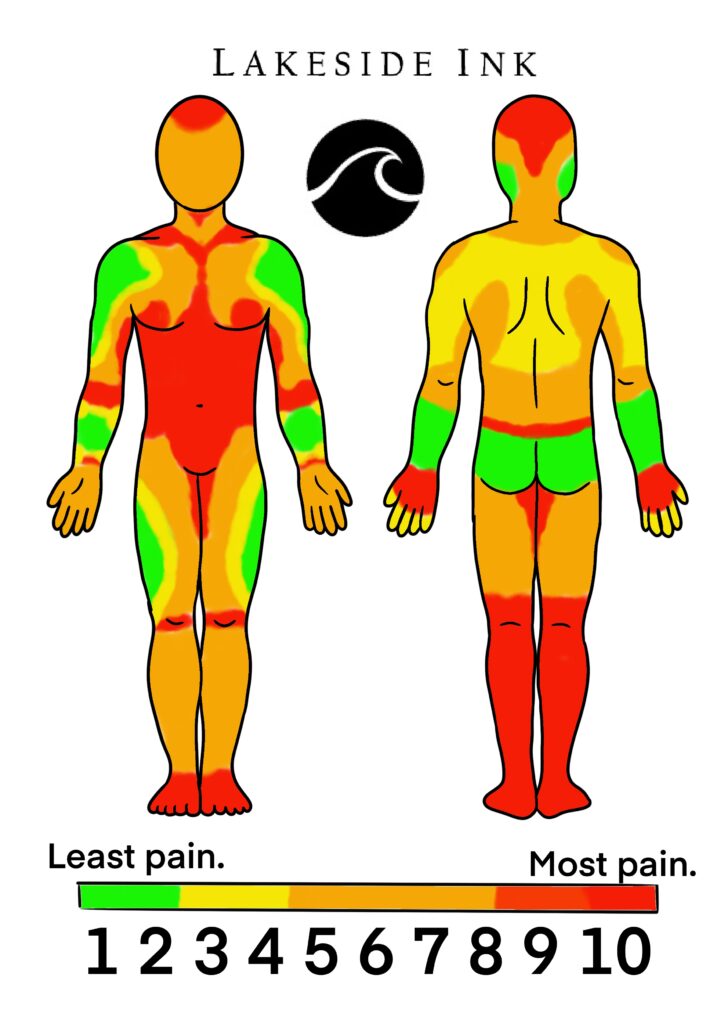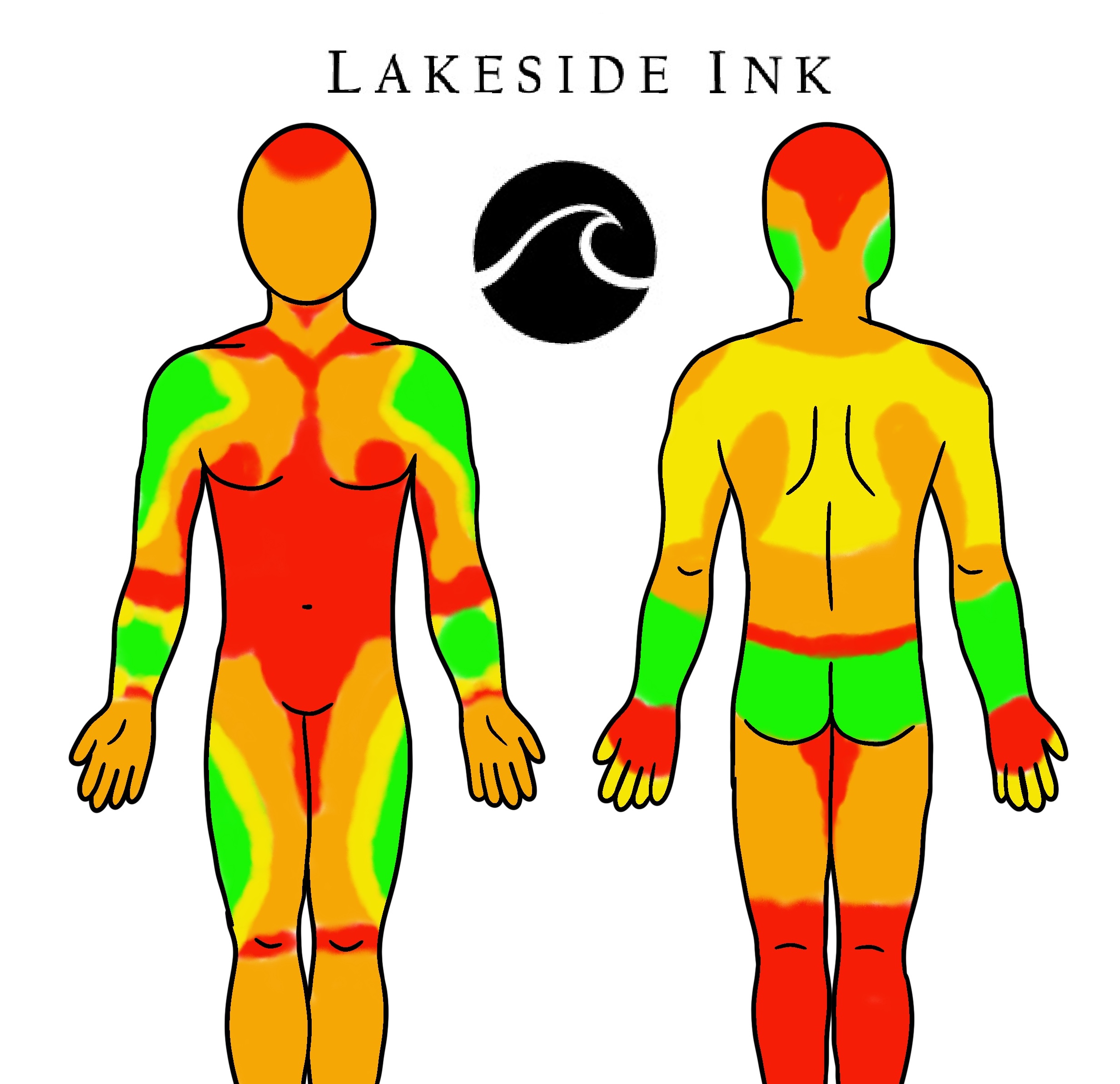Demystifying the Pain of Getting a Tattoo
Embarking on the journey to receive your first or even next tattoo can be filled with excitement, anticipation, and sometimes, a bit of apprehension. One of the most common questions we receive at Lakeside Ink is about the level of pain associated with getting a tattoo. This guide will delve into the topic of tattoo pain, providing you with a comprehensive understanding of what to expect. We’ll discuss variables that influence pain levels, offer insights into our tattoo pain chart, and share tips to manage discomfort. This information is intended to optimize your tattooing experience and help you better understand the phrase, “beauty is pain.”

Why Tattoos Hurt: The Science Behind the Pain
To comprehend the pain associated with tattoos, it helps to understand the process of tattooing itself. A tattoo gun injects ink into the second layer of your skin, the dermis, which is filled with nerves and blood vessels. This process of piercing the skin hundreds of times per minute inevitably results in some degree of discomfort. It’s essential to note that tattoo pain is subjective and can range from a mild annoyance to a more intense sensation, depending on various factors.
Influence of Individual Pain Tolerance on Tattoo Pain
Everyone experiences pain differently due to our unique pain thresholds. Some people may find the sensation of a tattoo needle akin to a light scratch, while others might equate it with a deep burning feeling. This subjective perception of pain makes it challenging to provide a one-size-fits-all answer to the question, “How painful is getting a tattoo?”
The Role of Tattoo Placement in Pain Perception
The location of your tattoo plays a significant role in determining the level of discomfort you might experience. Areas with thin skin or close to bones, such as the ribs, feet, and hands, are typically more sensitive. Conversely, areas with more muscle and fat, like the thighs or upper arms, might be less painful. Our unique tattoo pain chart provides a visual guide to expected pain levels in different body areas, although it’s essential
to remember that individual experiences will vary.
Numbing Solutions: An Aid to Manage Tattoo Pain
At Lakeside Ink, we understand that the prospect of pain might be daunting for some clients. To help manage this, we offer numbing solutions for an additional fee of $40. This solution must be applied at least 90 minutes before the tattooing session to ensure effectiveness. If you’re interested in this option or require more information, please feel free to message us.
Experiencing Tattoo Pain: A Part of the Journey
For first-timers, we often suggest embracing the pain associated with getting a tattoo. This experience can provide a valuable gauge for your pain tolerance, which can guide future tattoo decisions. However, it’s crucial to remember that it’s perfectly normal to feel apprehensive. Pain is a natural part of the tattooing process, but it’s also a part of the journey, symbolizing the effort and dedication that goes into each piece of body art.
Final Thoughts on Tattoo Pain
Tattoo pain is a multifaceted experience, influenced by individual pain tolerance, tattoo placement, and even mental preparedness. While it’s impossible to provide an exact prediction of the pain you’ll experience, we hope this guide provides a clearer understanding of what to expect and how to prepare. Always remember, every tattoo tells a story, and the pain is simply part of the tale.
We at Lakeside Ink are committed to ensuring your tattooing experience is as comfortable as possible. Feel free to reach out with any further questions regarding tattoo pain or any other aspect of the tattooing process. We look forward to helping you create a masterpiece that you’ll cherish for a lifetime.

